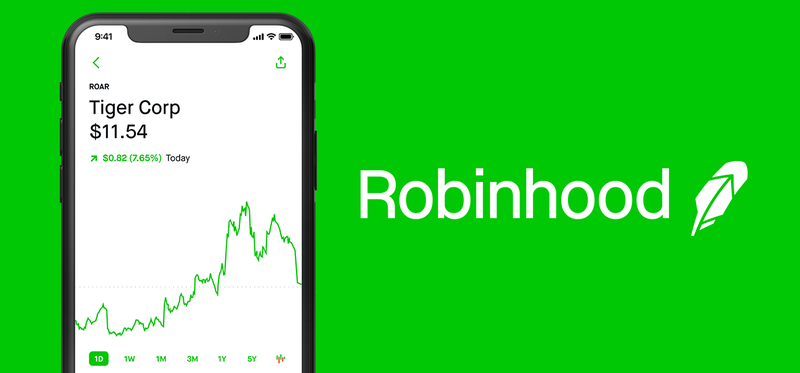10 Stocks Under $50 That Are Worth Your Attention

10 Stocks Under $50 That Are Worth Your Attention
Price doesn't always indicate quality
Beginning investors often think that a low price means that a stock is cheap. That isn’t true -- you’re better off using a ratio like price-to-earnings to see how a stock price compares with its profits -- but a stock price can offer clues.
A stock under $50 might have recently gone public. Companies generally price their IPOs between $15 and $30, giving the price plenty of room to appreciate before it gets into stock split range. It could also mean that the management team might want to keep the price low to entice retail investors.
Whatever the case, low-priced stocks offer an easier entry point for investors of all stripes. If you’re looking for stocks under $50, here are 10 you should be following.
5 Winning Stocks Under $49
We hear it over and over from investors, “I wish I had bought Amazon or Netflix when they were first recommended by the Motley Fool. I’d be sitting on a gold mine!” And it’s true. And while Amazon and Netflix have had a good run, we think these 5 other stocks are screaming buys. And you can buy them now for less than $49 a share! Simply click here to learn how to get your copy of “5 Growth Stocks Under $49” for FREE for a limited time only.
Previous
Next

1. Uber Technologies
Uber Technologies (NYSE: UBER) went public back in 2019, but the stock has struggled since then and now trades below its $45 IPO price. The stock slipped after it went public as investors balked at the company’s wide losses, and the pandemic also slammed the stock, erasing the need to hail a ride.
However, Uber is in considerably better shape than it was when it went public two years ago, even with the setback from the pandemic. The company is now on track to be adjusted EBITDA positive by the fourth quarter of this year as it has exited unprofitable businesses and made investments to correct the marketplace imbalance between drivers and riders that it’s had in its mobility segment. Additionally, its delivery segment has soared during the crisis as demand for food delivery has jumped across the board.
While Uber still has a lot to prove, the company is the ridesharing leader in much of the world, and it offers plenty of optionality in areas like delivery and freight. Additionally, the business is likely to catch a tailwind when the pandemic is fully controlled.
Previous
Next

2. Robinhood Markets
Robinhood Markets (NASDAQ: HOOD) has been one of the highest-profile stocks to come on the market this year. That’s not a surprise as the company has been a lightning rod of controversy since at least January when meme stocks like GameStop took off in an unprecedented short squeeze.
Regardless of your opinion on Robinhood, what is clear is that the free stock-trading app has permanently altered investing, opening it up to younger investors with free trades and an easy-to-use interface, and allowing trading of new assets like cryptocurrency, which some brokerages don’t do.
The stock has already found a base with the meme stock crowd as shares nearly doubled in a single day shortly after its July IPO. Robinhood is now trading closer, but still above, its $38 IPO price, and there’s a lot to like with the business itself, including its young customer base and skyrocketing growth as revenue jumped 131% in its most recent quarter to $565 million. That growth rate is likely to cool as the pandemic-driven trading frenzy fades, but the company still has plenty of disruptive growth potential left.
Previous
Next

3. General Motors
If Tesla has gotten too pricey for you, you may want to take a look at General Motors (NYSE: GM), the legacy automaker that’s fast becoming a leader in electric vehicles.
For years, General Motors has been a cheap value stock as investors saw it as a legacy player in a mature industry getting disrupted by challengers like Tesla. However, that perception is changing and the stock price is reacting accordingly.
GM has pledged an all-electric future and aims to have 30 global electric vehicle models by 2025. Its Bolt EV is outselling many of its legacy rivals.
Additionally, the company is also working to build a fully automated future with Cruise AV, its autonomous vehicle subsidiary, which is now valued at $30 billion and counts companies like Walmart, Honda Motor, and Microsoft as investors.
GM’s current business is also strong and producing gobs of free cash flow. Even with the chip shortage that’s affecting car manufacturers, the company is expecting adjusted earnings per share of $5.40 to $5.60, meaning the stock currently trades for a P/E under 10.
Previous
Next

4. Coupang
Does the Amazon of South Korea sound enticing to you? If so, you’ll want to take a closer look at Coupang (NASDAQ: CPNG), the South Korean e-commerce company that went public in March of this year.
Coupang has more than 100 fulfillment centers in 30 cities in South Korea, a country whose population density makes it especially amenable to e-commerce as shipping distances are shorter and it’s more efficient to deliver packages to apartment buildings than single-family homes.
Like other e-commerce companies, Coupang has been a big beneficiary of the pandemic. In the second quarter, revenue jumped 71%, or 57% on a constant currency basis, to $4.5 billion. The company is still operating at a loss, but e-commerce has proven to be a long-term source of growth and value creation for companies like Amazon, Alibaba, and MercadoLibre, and it could do the same for Coupang.
Previous
Next

5. Nio
One of the best-performing stocks of the pandemic era has been Nio (NASDAQ: NIO), the Chinese EV manufacturer that has surged alongside broader interest in the sector and as the company has proven itself to be a viable enterprise.
Nio is now expanding into markets beyond China, showing that the company aims to be a global leader in EVs rather than just cater to the world’s largest auto market.
After surviving a prepandemic cash crisis, Nio’s revenue is now soaring, and the company benefits from operating in a country offering significant subsidies for EVs in order to help clean up its polluted cities.
Revenue jumped 127% in the second quarter to $1.31 billion as the company continues to ramp up production, and its gross margin doubled from the year-ago quarter, showing that profitability is improving even as it still operates at a loss.
While the stock is high priced, if it continues to lead the transition to EVs, Nio shares could move even higher.
5 Winning Stocks Under $49
We hear it over and over from investors, “I wish I had bought Amazon or Netflix when they were first recommended by the Motley Fool. I’d be sitting on a gold mine!” And it’s true. And while Amazon and Netflix have had a good run, we think these 5 other stocks are screaming buys. And you can buy them now for less than $49 a share! Simply click here to learn how to get your copy of “5 Growth Stocks Under $49” for FREE for a limited time only.
Previous
Next

6. Lyft
Lyft (NASDAQ: LYFT), Uber’s chief domestic rival, offers a similar risk/reward profile to its larger peer, but it’s even more weighted toward a recovery as Lyft is basically a pure-play bet on ridesharing in the U.S.
The stock is still down substantially from its $72 IPO price in 2019, but Lyft just reported its first quarter of adjusted EBITDA profitability, beating Uber to the goal.
In the second quarter, the company posted an adjusted EBITDA of $23.8 million, which it achieved by scaling back on rider incentives, laying off staff, and trimming overhead costs.
Lyft’s revenue still hasn’t returned to prepandemic levels but it did more than double in the second quarter, showing business starting to come back. Active riders are still down about 20% from their prepandemic peak.
With the company’s cost model better aligned with the top line, it should gain leverage as the business recovers from the pandemic.
Previous
Next

7. Farfetch
Luxury fashion e-commerce platform Farfetch (NASDAQ: FTCH) was a rare winner in the apparel sector during the pandemic, showing that demand for luxury items persisted even during a time when there was little need for new clothes.
In 2020, gross merchandise volume on the platform rose 49% to $3 billion, and revenue jumped 64% to $1.7 billion, a remarkable feat considering the challenges in the apparel industry. The stock soared more than 500% last year on that breakout performance, but a recent pullback could offer a buying opportunity as the stock is down nearly 50% from its peak in February.
Farfetch’s growth hasn’t faded as GMV was up 40% in the second quarter, pacing 43% growth in revenue to $523 million, and making strides to profitability.
Alibaba also took a stake in the company in November, giving the company an important inroad into China, and a backer with deep pockets, as Alibaba is the world’s biggest e-commerce platform by GMV.
Previous
Next

8. GoodRx Holdings
There’s no shortage of criticism for the U.S. healthcare system, nor is there a shortage of opportunities for improvement. GoodRx Holdings (NASDAQ: GDRX) aims to do just that as the online pharmacy’s goal is to find the lowest available pharmacy price for each prescription.
The company has more than 7.5 million customers, and it posted 43% revenue growth in its most recent quarter to $176.6 million.
Unlike some e-commerce companies, the company is also highly profitable with generally accepted accounting principles (GAAP) net income of $31.1 million, giving it a profit margin near 20%.
GoodRx has more than 325,000 healthcare providers who refer companies to its services, giving it a competitive advantage and acting as a barrier to entry. With a noble mission and a cost-saving benefit to consumers in a steadily growing industry, GoodRx seems well positioned for future growth.
Previous
Next

9. Nutanix
The cloud software industry has been a big source of growth for investors. But Nutanix (NASDAQ: NTNX), which offers a cloud-based subscription for hyperconverged infrastructure tools that allow companies to combine computing networking and storage, has had mixed results.
The company began life as a hardware company before transitioning to software and then subscription software through the cloud. In part because of accounting rules, the company’s top-line growth has been sluggish in recent years as it completes that transition, but the worst may now be behind Nutanix.
In its most recent earnings report, run-rate annual contract value rose 25% even as revenue increased just 8%. Over the coming years, those two numbers should start to approach each other, helping to pad its growth numbers.
Nutanix is unprofitable, but the company is trimming its losses, and the cloud subscription model tends to deliver profits at scale.
The company’s valuation is significantly lower than those of its cloud software peers, and there is ample room for growth in front of it in the hybrid cloud market.
Previous
Next

10. Stitch Fix
Stitch Fix (NASDAQ: SFIX) has been a battleground stock through much of its history as investors can’t seem to decide if the online styling service is disrupting the apparel industry or if it’s an idea that will never go mainstream.
The stock has pulled back substantially from its post-earnings pop in June, making now look like a good buying opportunity. The company just switched CEOs, tapping Elizabeth Spaulding in place of founder Katrina Lake, to run the launch of its direct buy program to new customers. That move essentially expands the company’s addressable market from customers interested in Fixes, or a box of five items, to everyone who shops for clothes.
In other words, the move has the potential to transform the company, and if it resonates, the stock could move a lot higher from here. Stitch Fix’s core business continues to grow, and the company is targeting revenue growth around 21% for the current fiscal year. Still, the direct expansion is the biggest catalyst to watch right now. We’ll learn more when the company reports fiscal fourth quarter results on Sept. 21.
5 Winning Stocks Under $49
We hear it over and over from investors, “I wish I had bought Amazon or Netflix when they were first recommended by the Motley Fool. I’d be sitting on a gold mine!” And it’s true. And while Amazon and Netflix have had a good run, we think these 5 other stocks are screaming buys. And you can buy them now for less than $49 a share! Simply click here to learn how to get your copy of “5 Growth Stocks Under $49” for FREE for a limited time only.
Previous
Next

Price isn't everything
While the share price of any stock is worth looking at, especially for investors only interested in buying a few shares or those looking at trading options, you should remember that price alone tells you little about the stock. It’s much more important to consider the price in relation to a business metric like earnings and sales, as well as the overall quality of the business and the growth prospects.
Plenty of investors have made the mistake in the past of going after value traps, or stocks that look cheap but are priced that way because their businesses are broken.
If you are looking to buy a stock for less than $50, the list above is a good starting place. In fact, some of these growth names may not be under $50 for long.
John Mackey, CEO of Whole Foods Market, an Amazon subsidiary, is a member of The Motley Fool’s board of directors. Teresa Kersten, an employee of LinkedIn, a Microsoft subsidiary, is a member of The Motley Fool’s board of directors. Jeremy Bowman owns shares of Alibaba Group Holding Ltd., Amazon, MercadoLibre, and Stitch Fix. The Motley Fool owns shares of and recommends Alibaba Group Holding Ltd., Amazon, Coupang, Inc., Farfetch Limited, MercadoLibre, Microsoft, NIO Inc., Stitch Fix, and Tesla. The Motley Fool recommends GoodRx Holdings, Inc., Nutanix, and Uber Technologies and recommends the following options: long January 2022 $1,920 calls on Amazon and short January 2022 $1,940 calls on Amazon. The Motley Fool has a disclosure policy.
Previous
Next
Invest Smarter with The Motley Fool
Join Over Half a Million Premium Members Receiving…
- New Stock Picks Each Month
- Detailed Analysis of Companies
- Model Portfolios
- Live Streaming During Market Hours
- And Much More
READ MORE
HOW THE MOTLEY FOOL CAN HELP YOU
-
Premium Investing Guidance
Market beating stocks from our award-winning service
-
The Daily Upside Newsletter
Investment news and high-quality insights delivered straight to your inbox
-
Get Started Investing
You can do it. Successful investing in just a few steps
-
Win at Retirement
Secrets and strategies for the post-work life you want.
-
Find a Broker
Find the right brokerage account for you.
-
Listen to our Podcasts
Hear our experts take on stocks, the market, and how to invest.
Premium Investing Services
Invest better with The Motley Fool. Get stock recommendations, portfolio guidance, and more from The Motley Fool's premium services.